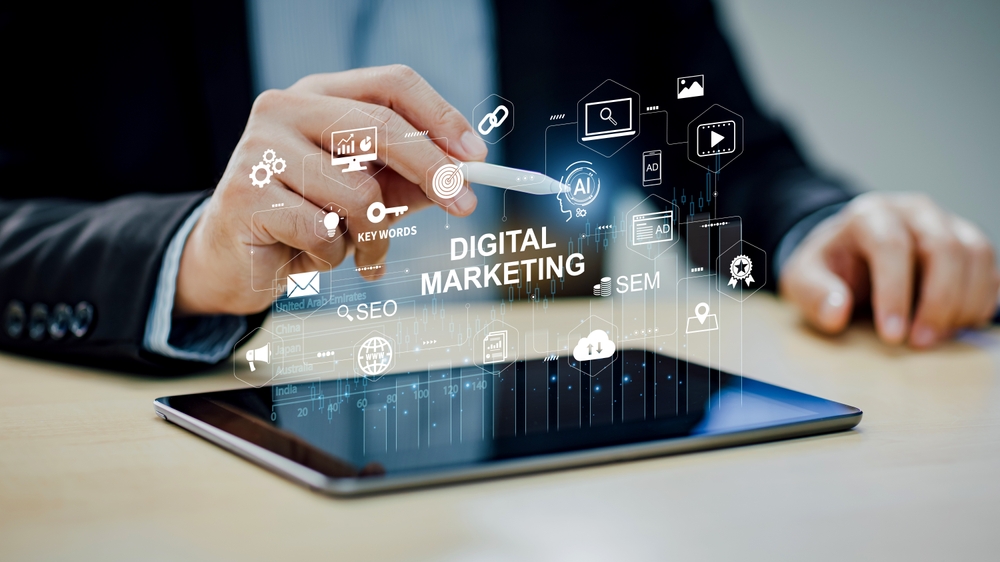How to automate marketing workflows using Robotic Marketer
As a marketing practitioner with 30 years experience, one of the biggest challenges marketers face is not having enough time to do everything they need to. With marketing, the opportunities to execute more campaigns are endless. We built Robotic Marketer to improve the health of marketing teams and overall marketing performance. Automating from strategy to implementation to reporting is not only a time saver, it is more intelligent.
The integration of AI in marketing has revolutionized the way businesses approach their go to market strategy. One of the most promising advancements in this field is the use of AI-driven visual content creation. This technology enables brands to produce high-quality, engaging content without the extensive time and resource investment traditionally required.
Marketing Automation by Integrating AI Tools
The first step in automating marketing workflows involves the establishment of a solid AI marketing strategy. This strategy serves as the game plan for all subsequent marketing activities. AI-powered content tools play a crucial role in this phase, assisting in data analysis to identify the target audience, predict trends, and define the marketing objectives.
The strategy should outline how to utilize AI-based design software for creating personalized visuals that resonate with the audience. By employing AI in social media content creation, businesses can ensure a consistent and impactful online presence. The use of AI-generated images for marketing further enhances this strategy, offering a scalable solution for content production.
Content Generation and Sequencing
Once the strategy is in place, the next step is to focus on content generation and sequencing. Automated image and video generation tools can significantly reduce the time required to create engaging visuals. These AI-enhanced content production systems are adept at generating creative visuals using AI technology, making them indispensable for modern marketing teams.
Automated Video Editing and Visual Storytelling
Automated video editing with AI can transform raw footage into polished marketing videos with minimal human intervention. This approach not only saves time but also ensures that the content is tailored to the specific preferences of the target audience. AI tools for visual storytelling enable marketers to craft compelling narratives that capture and retain the audience’s attention.
Innovations in AI-based Design
The future of AI in visual marketing looks promising, with continuous innovations enhancing the capabilities of AI-based design software. Artificial intelligence in graphic design is making it easier for marketers to produce high-quality content swiftly. Personalized visuals with AI are becoming the norm, allowing brands to connect with their audience on a deeper level.
From Strategy to Implementation
Transitioning from strategy to implementation is a critical phase in automating marketing workflows. This process is streamlined with the help of project management integration tools. These tools facilitate the sequencing of content, ensuring that marketing activities are executed systematically and efficiently.
Marketing teams can utilize AI tools for brand visuals to create and manage their visual assets. By incorporating machine learning in visual content creation, brands can continuously refine their marketing materials to align with evolving market trends and consumer preferences.
Reporting and Analysis
The final step in the automation process involves reporting and analysis. Marketing budget analysis tools, powered by AI, provide actionable insights into campaign performance. These insights enable marketers to adjust their strategies in real-time, optimizing their marketing efforts for maximum impact.
AI-generated infographics play a pivotal role in this phase, offering a visual representation of data that is easy to understand and share. The use of AI tools for visual storytelling extends to reporting, ensuring that the insights derived are communicated effectively to stakeholders.
AI and Augmented Reality in Marketing
Another innovative aspect of AI in marketing is the integration of augmented reality (AR). AI and augmented reality in marketing create immersive experiences for consumers, enhancing engagement and brand loyalty. Marketers can leverage these technologies to create interactive advertisements and product demonstrations, setting their brand apart in a competitive market.
Artificial intelligence in advertising creatives allows for the automation of AD creation, ensuring that content is both relevant and appealing to the target audience. This approach not only improves the efficiency of AD campaigns but also maximizes their impact.
The use of AI-powered content tools in marketing is not a one-time effort but an ongoing process of improvement and adaptation. As market conditions and consumer behaviors change, AI tools enable marketers to stay ahead of the curve. By leveraging AI innovations in visual content, businesses can continuously enhance their marketing strategies and achieve better results.
AI-driven visual content creation, combined with automated video editing and AI-generated images, ensures that brands can maintain a consistent and high-quality online presence. The integration of machine learning in visual content creation allows for the continuous refinement of marketing materials, ensuring alignment with business goals.


